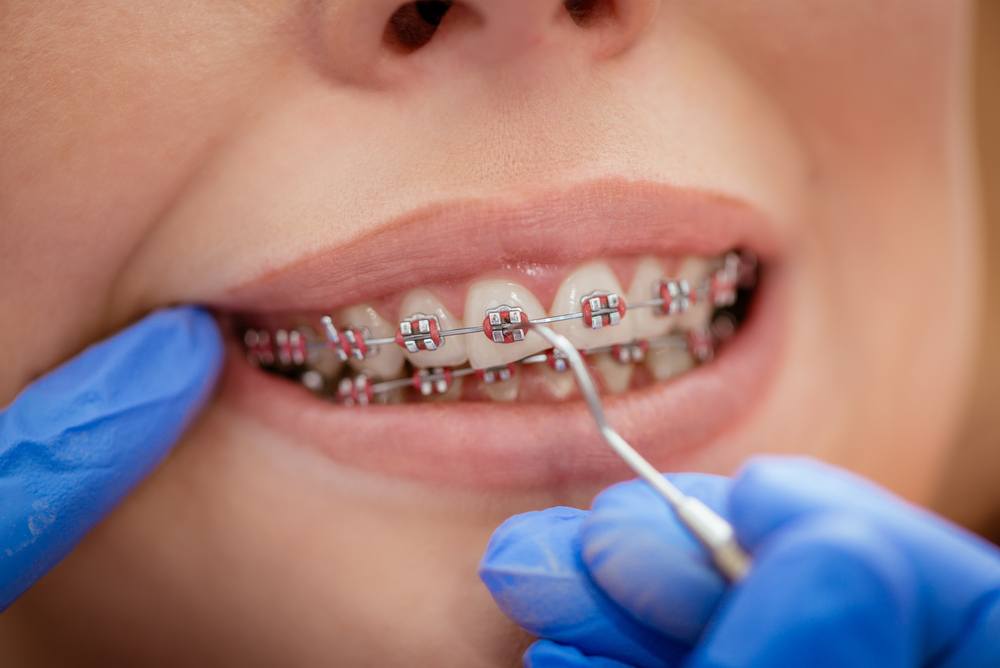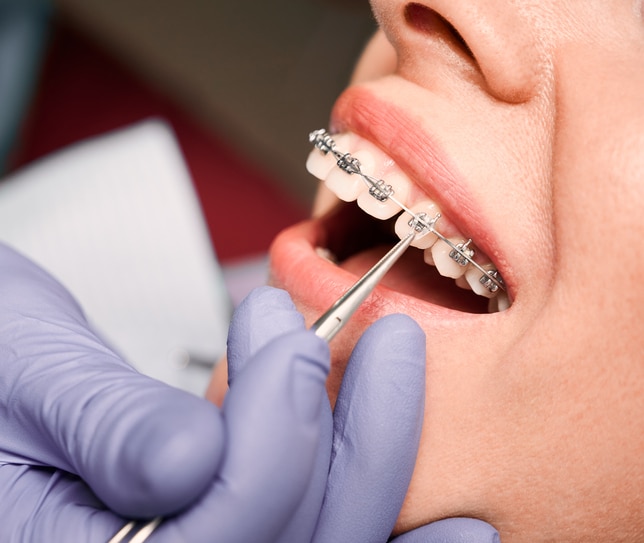What Establishes Cumming Braces and Aligners Apart from Various Other Orthodontic Treatments
What Establishes Cumming Braces and Aligners Apart from Various Other Orthodontic Treatments
Blog Article
Comprehensive Guide to Orthodontics Treatments for Correcting Dental Imbalances
In the world of orthodontics, the journey to accomplishing a flawlessly aligned smile includes a myriad of treatments customized to correct dental misalignments. From typical dental braces to unnoticeable aligners and even medical alternatives, the area of orthodontics provides a series of remedies to address varying levels of oral abnormalities. Comprehending the intricacies of each procedure, including their devices, benefits, and possible disadvantages, is crucial in making informed decisions about one's orthodontic therapy. As we navigate through the thorough overview to orthodontic treatments for remedying dental imbalances, the intricate details of each method will certainly unravel, dropping light on the course towards a practical and harmonious dental positioning.
Orthodontic Procedures Introduction

Along with typical braces and clear aligners, orthodontists might likewise advise other treatments like headgear, palatal expanders, or retainers to resolve particular alignment problems (cumming invisalign). These procedures are customized to each person's distinct demands and may entail a combination of therapies to achieve the preferred results. Routine adjustments and surveillance are important components of orthodontic treatment to ensure development gets on track and to make any needed alterations in the process. By undertaking orthodontic procedures, clients can not just attain a straighter smile but likewise improve their general dental health and function.
Traditional Braces: Exactly How They Work
When thinking about orthodontic therapies for dental imbalances, traditional braces stand out as a reliable method for remedying teeth placing. Conventional dental braces are composed of brackets, cables, and bands that function together to apply constant stress on the teeth, gradually moving them right into the wanted alignment.
One secret facet of how conventional dental braces job is the process of bone improvement. As stress is applied to the teeth with the dental braces, the bone bordering the teeth is reshaped to support the brand-new tooth placements. This renovation is necessary for the long-term stability of the dealt with placement. Clients will need routine modifications at the orthodontist's workplace to make certain the dental braces continue to apply the appropriate pressure for efficient teeth motion.
Unseen Aligners: Disadvantages and pros
These clear, custom-made trays are essentially undetectable when put on, making them an attractive option for individuals looking for a much more visually pleasing orthodontic treatment. Individuals can eliminate the aligners prior to eating or cleaning their teeth, minimizing the risk of food obtaining stuck in the appliance and streamlining the cleaning procedure.

Surgical Orthodontic Options
Surgical interventions in dr dds orthodontics present practical choices for dealing with complicated dental misalignments that may not be properly solved via standard orthodontic therapies. While standard dental braces and undetectable aligners can fix many orthodontic issues, particular cases need surgical intervention to attain optimum outcomes. Surgical orthodontic options are generally recommended for serious malocclusions, considerable jaw discrepancies, and cases where the underlying bone framework requires modification to achieve correct positioning.
One typical surgical orthodontic treatment is orthognathic surgical treatment, which involves rearranging the jaws to remedy functional concerns such as problem speaking or chewing. This surgical procedure is typically carried out in collaboration with an orthodontist that assists straighten the teeth prior to and after the procedure. Surgical orthodontics might also entail treatments to expose influenced teeth, eliminate excess gum cells, or reshape the jawbone to produce a more unified facial account.
Before considering medical orthodontic choices, patients undergo an extensive analysis to determine the requirement and possible benefits of such treatments. orthodontist. While surgical procedure may seem overwhelming, it can substantially enhance both the feature and visual appeals of the smile in situations where traditional orthodontic therapies fall short
Retainers and Post-Treatment Treatment

Failing to abide with post-treatment treatment directions can result in regression, where the teeth slowly relocate back towards their original positions. Consistent retainer wear, good dental health, and normal oral examinations are vital for preserving the results achieved through orthodontic surgery and ensuring the long-term security of the dealt with oral placement.
Final Thought
In final thought, orthodontic procedures provide different options for fixing dental misalignments. Traditional braces make use affordable cosmetic dentistry of steel brackets and wires to shift teeth right into correct positioning. Unnoticeable aligners offer a more very discreet choice yet might not appropriate for all instances. Surgical orthodontic choices are available for much more extreme misalignments. Retainers are commonly utilized post-treatment to maintain the brand-new positioning. Overall, orthodontic treatments can effectively boost dental wellness and aesthetic look.
As we navigate via the extensive go to these guys overview to orthodontic procedures for remedying oral misalignments, the complex information of each technique will unfold, losing light on the course towards a functional and harmonious oral alignment. - cumming aligners
One of the most typical orthodontic therapies is the usage of dental braces, which consist of metal braces and cords that apply gentle pressure to slowly change teeth right into the desired setting.When taking into consideration orthodontic therapies for dental misalignments, standard dental braces stand out as a time-tested technique for remedying teeth placing. In addition, unnoticeable aligners may not be ideal for intricate orthodontic issues that need more substantial teeth movement, as they are usually suggested for light to modest instances. Retainers are custom-made orthodontic devices developed to hold teeth in their dealt with positions after the completion of orthodontic treatment.
Report this page